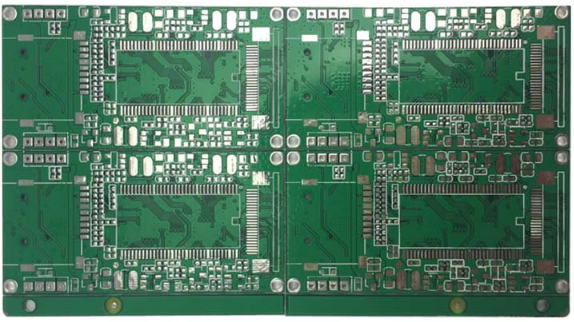At first glance, regardless of the internal quality of the PCB board, the surface is almost the same. It is through the surface that we see the differences, and these differences are critical to the durability and functionality of the PCB throughout its life.
Whether in the manufacturing assembly process or in actual use, PCB must have reliable performance, which is very important. In addition to related costs, defects in the assembly process may be brought into the final product by the PCB, and malfunctions may occur during actual use, leading to claims. Therefore, from this point of view, it is no exaggeration to say that the cost of a high-quality PCB is negligible. In all market segments, especially those that produce products in key application areas, the consequences of such failures are disastrous.
When comparing PCB prices, these aspects should be kept in mind. Although the initial cost of reliable, guaranteed, and long-life products is high, they are still worth the money in the long run. Let's take a look at the 14 most important characteristics of high-reliability circuit boards:
1. 25 micron hole wall copper thickness
benefit:
Enhance reliability, including improving the resistance to expansion of the z-axis.
Risks of not doing this:
Blow holes or degassing, electrical connectivity problems during assembly (inner layer separation, hole wall breakage), or failure under load conditions in actual use. IPCClass2 (the standard adopted by most factories) requires 20% less copper plating.
2. No welding repair or open circuit repair
benefit:
Perfect circuit can ensure reliability and safety, no maintenance, no risk
The risk of not doing so
If repaired improperly, the circuit board will be broken. Even if the repair is ‘proper’, there is a risk of failure under load conditions (vibration, etc.), which may cause failure in actual use.
3. Exceeding the cleanliness requirements of IPC specifications
benefit
Improving PCB cleanliness can increase reliability.
The risk of not doing so

Residues and solder accumulation on the circuit board bring risks to the solder mask. Ionic residues can cause corrosion and contamination risks on the soldering surface, which may lead to reliability problems (bad solder joints/electrical failures) and ultimately increase the occurrence of actual failures Probability.
4. Strictly control the service life of each surface treatment
benefit
Solderability, reliability, and reduce the risk of moisture intrusion
The risk of not doing so
Due to the metallographic changes in the surface treatment of old circuit boards, soldering problems may occur, and moisture intrusion may cause problems such as delamination, separation (open circuit) of the inner layer and the hole wall during the assembly process and/or actual use. .
5. Use internationally well-known substrates-do not use "local" or unknown brands
benefit
Improve reliability and known performance
The risk of not doing so
Poor mechanical performance means that the circuit board cannot perform the expected performance under assembly conditions. For example, high expansion performance will cause delamination, disconnection and warpage problems. Weakened electrical characteristics can lead to poor impedance performance.
6. The tolerance of the copper clad laminate meets the requirements of IPC4101ClassB/L
benefit
Strictly controlling the thickness of the dielectric layer can reduce the deviation of expected electrical performance.
The risk of not doing so
The electrical performance may not meet the specified requirements, and the output/performance of the same batch of components will be quite different.
7. Define solder mask materials to ensure compliance with IPC-SM-840ClassT requirements
benefit
NCAB Group recognizes "excellent" inks, realizes ink safety, and ensures that solder mask inks meet UL standards.
The risk of not doing so
Inferior inks can cause adhesion, flux resistance, and hardness problems. All these problems will cause the solder mask to separate from the circuit board and eventually lead to corrosion of the copper circuit. Poor insulation properties can cause short circuits due to accidental electrical continuity/arc.
8. Defining the tolerances of shapes, holes and other mechanical features
benefit
Strict control of tolerances can improve the dimensional quality of products-improve fit, shape and function
The risk of not doing so
Problems in the assembly process, such as alignment/fitting (only when the assembly is completed will the press-fit needle problem be discovered). In addition, due to the increased size deviation, there will be problems when installing into the base.
9. NCAB specifies the thickness of the solder mask, although IPC does not have relevant regulations
benefit
Improve the electrical insulation properties, reduce the risk of peeling or loss of adhesion, and strengthen the ability to resist mechanical impact-no matter where the mechanical impact occurs!
The risk of not doing so
Thin PCB solder mask can cause adhesion, flux resistance and hardness problems. All these problems will cause the solder mask to separate from the circuit board and eventually lead to corrosion of the copper circuit. Poor insulation properties due to the thin solder mask can cause short circuits due to accidental conduction/arc.
10. Appearance requirements and repair requirements are defined, although IPC does not define
benefit
In the PCB manufacturing process, careful care and carefulness create safety.
The risk of not doing so
Various scratches, minor injuries, repairs and repairs-the circuit board works but doesn't look good. In addition to the problems that can be seen on the surface, what are the invisible risks, the impact on assembly, and the risks in actual use?